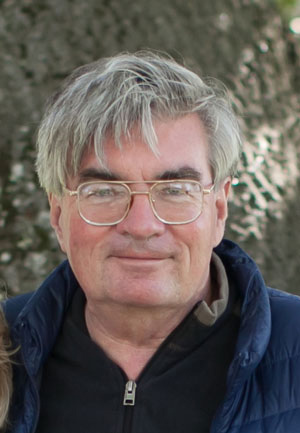

The Myth of the Mousetrap:
The Dangers of Innovation
by John Neugent
Tech articles | Commentary articles |
The late John Neugent probably knew more about bicycle wheels than anyone else. Maybe more about bikes as well. He spent his life in the bike business, at every level. He owned Neugent Cycling, a firm devoted to delivering world-class equipment at the lowest possible price. —Chairman Bill

Author John Neugent

Les Woodland's book Cycling's 50 Triumphs and Tragedies: The rise and fall of bicycle racing's champions is available in print, Kindle eBook & audiobook versions. To get your copy, just click on the Amazon link on the right.
John Neugent writes:
Ever since I rode my first bike I started thinking of ways to improve it. Like Ralph of the old Honeymooners, I always thought of making it big with a new invention. I was not alone. When I filed my first few patent applications in the ’80s, there were more patents on bikes than any other category. This is somewhat expected when you consider the invention of the bike coincided with the industrial revolution and materials, machines, and tools. Leonardo Da Vinci “invented” the bike, which according to US Patent law could have been patented, but there was no way to make it because material and procedures to make it weren’t available then.
So I am not alone in trying to develop cutting edge products. Industrial designers have a saying about cutting edge. “Cutting edge means you bleed.” So undeterred, I was with the Sachs team who, in the early ’90s tried to introduce disc brakes. After years of marketing and losses of millions we finally decided it wasn’t going to happen.
It did have one benefit for me. I was contacted by EV Global Motors. They were one of the first in the e-bike business. I went to their headquarters, which was a beach front house in Malibu, and was overwhelmed by their presentation. The two principals, both in attendance, were Malcolm Curry (CEO of Hughes Aircraft, and Under Secretary of Defense) and Malcolm Bricklin (founder of Subaru of America, introducer of the Yugo, and manufacturer of the Bricklin automobile). Despite all of that know-how and money, it was a failure.
I remember going to our French hub factory and seeing pallets of disc brake hubs waiting to be recycled. By chance their head product guy was also out selling shares in their company. He met Lee Iacocca and convinced him to go into e-bikes. When Sachs bought SRAM and I was out of a job, he contacted me and I was off for a year to work on his attempt of introducing e-bikes as their marketing consultant. After a year I jumped ship believing there was no way they would succeed. I was right.
Here’s where the mousetrap comes in. The old saying is “make a better mousetrap and the world will beat a path to your door.” The fact that Bricklin, Curry, and Iacocca couldn’t introduce the e-bike, the guy who knew about mousetraps didn’t know anything about business. Shimano introduced aero to the industry in the late ’70s and was laughed out of the industry. But they learned from it and decided to enter a market only after the market had accepted the concept. They have done it with disc brakes, wheel systems, and lots of other categories. It’s the power of distribution and the brand that makes the money. Innovators crack the door and the big companies push it open.
John Neugent was one of the first to establish the making of quality hand-built wheels in Taiwan around the turn of the century. He now owns Neugent Cycling, a firm devoted to delivering world-class equipment at the lowest possible price.







